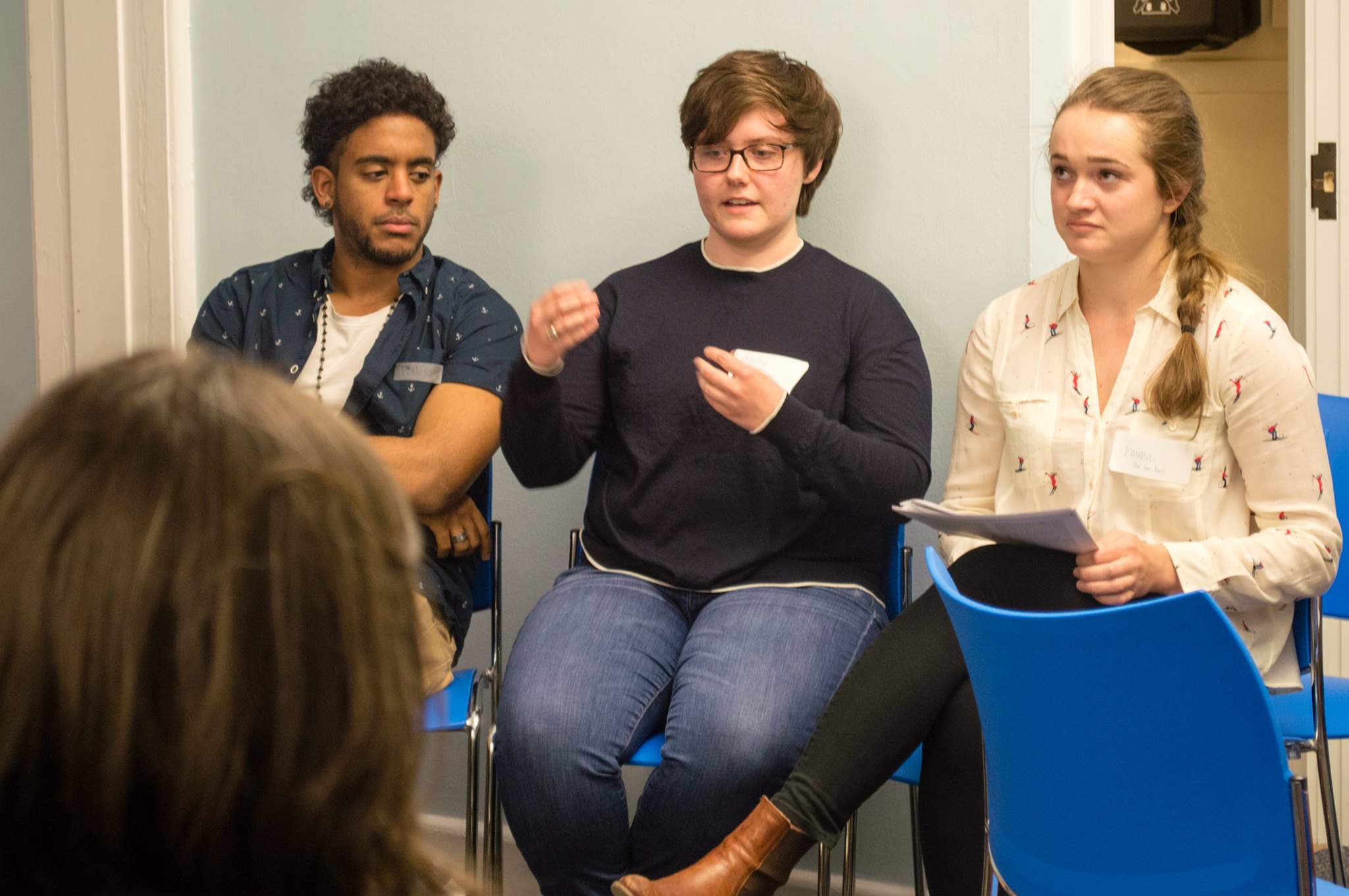

“Being a Human in STEM” is a project-based course designed by students and chemistry professor Sheila Jaswal. The course, offered as a Chemistry special topics class, aims to foster a more inclusive, supportive STEM community and develop a framework for students and faculty to both understand and navigate diverse identities in the classroom and beyond.
Since its inception in the Spring 2016 semester, the course has thrived, with students presenting their results at numerous conferences. During one such conference at Yale University, the presentation was so effective that it prompted Yale to create their own version of the course.
I sat down with Ashley Bohan ’16 and Emma Ryan ’17 to learn more about the course and to hear about their own experiences with the project.
Q: How did you get involved with “Being a Human in STEM”?
Emma Ryan: I got involved with the project after Amherst Uprising last fall. I wanted to do more than just be there and be empathetic towards all these stories people were telling. I heard about this class that a few of my friends were creating with Dr. Jaswal, and I thought it would be a great way to get involved and to basically walk the talk.
Ashley Bohan: I felt similarly after Amherst Uprising. I also spent my junior year at Wellesley College, which was a refreshing change of pace and a school where I felt that I was in a great learning environment. While I was there, I felt like I really belonged to a community within my STEM classes, which was especially impressive because I wasn’t even a student there. My professors really went out of their way to make me feel welcome. When I came back, I was wondering what the difference was between these two similar schools and I wanted to know what about both schools influenced how students learned. What would make the ideal learning environment?
Q: Could you tell us what sort of projects you’ve participated in during your time with the course?
ER: Last year, we both worked extensively on a survey project. We talked with over 40 students, staff and faculty, and interviewed them about their STEM experiences at Amherst. We spoke to both current STEM majors and people who had dropped STEM majors to try to capture different perspectives. We asked questions about any challenges they faced concerning their identities, how they overcame those challenges, and so on. We synthesized these results and tried to identify certain themes in the results, which were very clear to the both of us.
Q: What kind of results did you see?
AB: I was a little bit shocked at the stuff that would continuously come up in our interviews. For example, several people would say that a certain professor was a major influence on their STEM experiences and they didn’t think they would have stuck with their major if it hadn’t been for that professor. I was especially surprised and interested in the act that there was so much continuity in these experiences.
ER: I remember that a major theme we say was people suffering from imposter syndrome, or at least the effects of it. Many of our interviewees felt that they were alone or in the minority with their problems, when in reality, it seemed that almost everyone felt like they were an imposter.
AB: Yeah, that was validating for me to hear. It was good to know that the struggles I faced were shared by my peers.
ER: As a person with very scant high school science preparation who initially struggled in my early science classes here at Amherst, it was kind of comforting to hear that my experience wasn’t unique. I’ve noticed that it’s common for students to project that kind of mindset when it’s really not the case. Not everyone comes from a prep school and knows how to do everything! There’s a huge disparity in terms of preparation coming in, so that’s something we look forward to figuring out.
Q: What projects will the course be taking on in the future?
AB: We actually just released our project for this semester, a survey of only STEM students. If our interviews were about people’s individual struggles at Amherst, the survey we just sent out was about how to overcome these struggles. We’re trying to collect tips by STEM students for STEM students as they navigate their time here at Amherst.
Q: Do you have any final thoughts you’d like to share about the course?
AB: One of the things I appreciate the most about “Being a Human in STEM” is how the course works as a collaborative effort between students, faculty and staff. If anyone wants to work as a team on projects designed to support student learning and to make space for the conversations about identity in STEM at Amherst, this course is the perfect place for you.
More information about this project can be found at beinghumaninstem.com